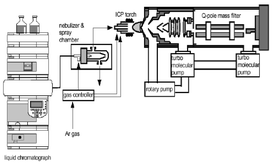Environmentally friendly sample treatment for speciation analysis by hyphenated techniques
Abstract
Trace element speciation has become an important issue in different fields of science. Research interests have moved from total element composition of the sample toward characterization of species that are responsible for biochemical and geochemical behavior of the elements. In this report, two important environmental aspects of trace element speciation by hyphenated techniques are discussed. First, the analytical results that are useful in assessing pollution and evaluating possible toxicological risks followed by designing the remediation strategies are considered. On the other hand, performing the analytical procedures involves a certain environmental impact. Within this context, current hyphenated techniques are reliable analytical tools and also present relatively low environmental hazards. However, the successful application of these techniques for the analysis of complex samples relies on the use of suitable pretreatment procedures that should be considered as the main source of wastes in the analysis. Several modern sample preparation techniques offer improved efficiency and selectivity over classical extractions: short extraction times, reduced solvent utilization and possible miniaturization and automation. In this article, the advantages and limitations of solid phase extraction, solid phase microextraction and supercritical fluid extraction are discussed and their applications in trace element speciation briefly reviewed.


 Please wait while we load your content...
Please wait while we load your content...